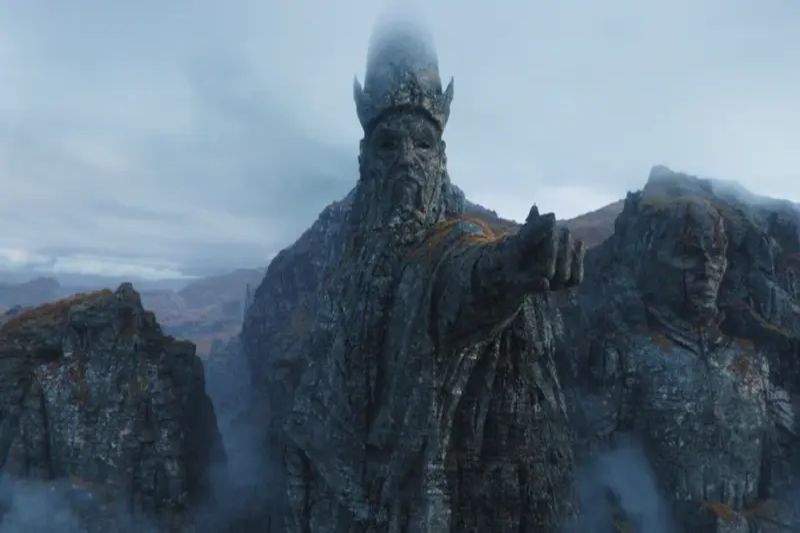In the climactic finale of Ahsoka, viewers caught a brief glimpse of Baylan Skoll standing atop a pair of statues reminiscent of the Argonath from The Lord of the Rings. This mysterious character, portrayed by Ray Stevenson, had been absent for most of the finale after quietly slipping away during episode 7 of Ahsoka. While the focus of the finale was primarily on Thrawn’s escape and the efforts of Ezra Bridger, Sabine Wren, and Ahsoka Tano to stop him, Baylan’s brief appearance left fans wondering about his true purpose on Peridea.
Throughout the Ahsoka series, Baylan had hinted at his search for a power beyond that of the Jedi and Sith, sparking theories about the possible involvement of Abeloth from Star Wars Legends. Despite aiding Nightsister Morgan Elsbeth and feigning loyalty to Thrawn, his underlying motive was to uncover the truth behind the stories he had heard at the Jedi Temple during his childhood. He believed that the galaxy’s never-ending struggle for power could only be resolved if he took action. Now, it appears that he may have found the ancient power necessary to end the conflict once and for all.
In Ahsoka episode 8, Baylan is seen standing atop a statue of the Father, a character from Star Wars: The Clone Wars season 3, who resided in the enigmatic realm of Mortis along with his children, the Son and the Daughter. The Mortis arc in The Clone Wars was highly allegorical and portrayed Mortis as a conduit through which the entire Force flowed. With Baylan’s discovery of these statues, it becomes clear that he has been searching for this conduit and the power to control the flow of the Force itself.
While Baylan Skoll stands on the statue of the Father, a statue of the Son can also be seen to the right. However, the statue of the Daughter on the left has been destroyed and worn away. In The Clone Wars, the Daughter represented the light side of the Force in the galaxy. Her statue’s absence speaks volumes about the state of the light side during the events of Ahsoka, where very few Jedi remain to practice the light side of the Force following Order 66 and the destruction of the Jedi Temple.
The Mortis Gods’ History in Star Wars Canon:
In the Mortis arc of The Clone Wars, the Daughter represented the light side of the Force, the Son represented the dark side, and the Father maintained balance between the two. Anakin Skywalker, Ahsoka Tano, and Obi-Wan Kenobi found themselves transported to the realm of Mortis, where the Son attempted to seduce Anakin to the dark side while the Father wished for Anakin to take on the role of maintaining the balance in the Force.
During this arc, the Daughter was accidentally killed by the Son, symbolizing the destruction of the Jedi and the rise of the dark side, much like how Palpatine came to power unchecked over the galaxy. However, the Father sacrificed himself to strip the Son of his power, ending the reign of the Mortis gods long before the events of Ahsoka.
At present, it remains unclear which of the three Mortis gods is calling to Baylan. Given their demise during The Clone Wars and the timeline of Ahsoka, it is unusual that he is drawn to them. However, their symbolic connection to the Force suggests that they may persist beyond death. They could be urging Baylan to find Mortis itself and become the new keeper of the balance.
The distant light that Baylan sees on Peridea is likely the Mortis monastery from The Clone Wars. While Anakin, Ahsoka, and Obi-Wan were spiritually transported to this location, Baylan appears to have discovered its physical existence. This discovery could signify that Baylan Skoll has found the conduit of the Force itself. The implications for his character and how he might harness the power of the monastery remain to be seen. With the passing of Ray Stevenson, it may pose a challenge for Dave Filoni to conclude Baylan’s Ahsoka subplot involving Mortis in the future.
Disclaimer: The views, suggestions, and opinions expressed here are the sole responsibility of the experts. No Atlantic Brief journalist was involved in the writing and production of this article.


